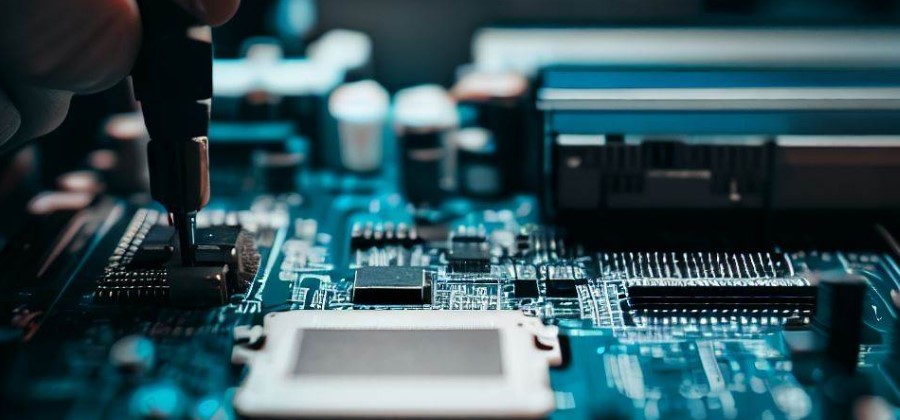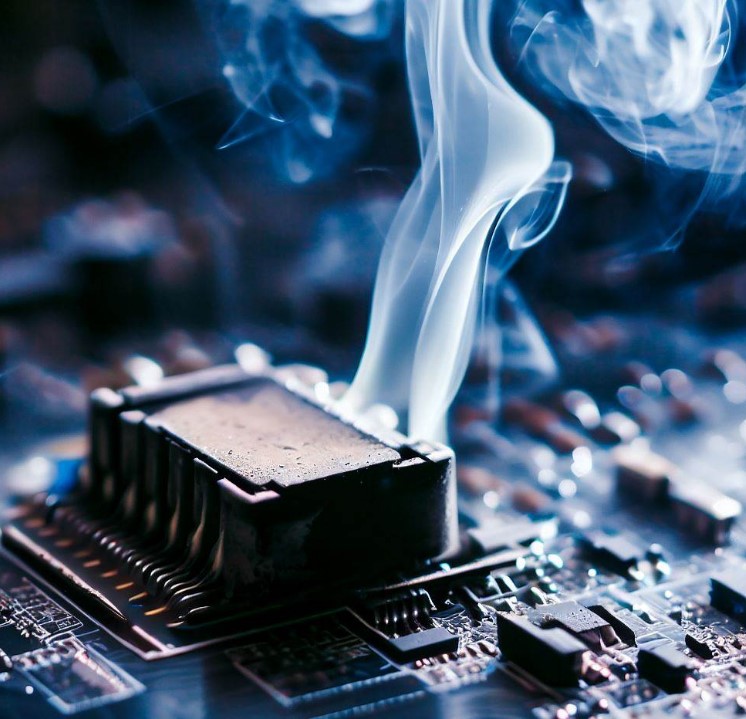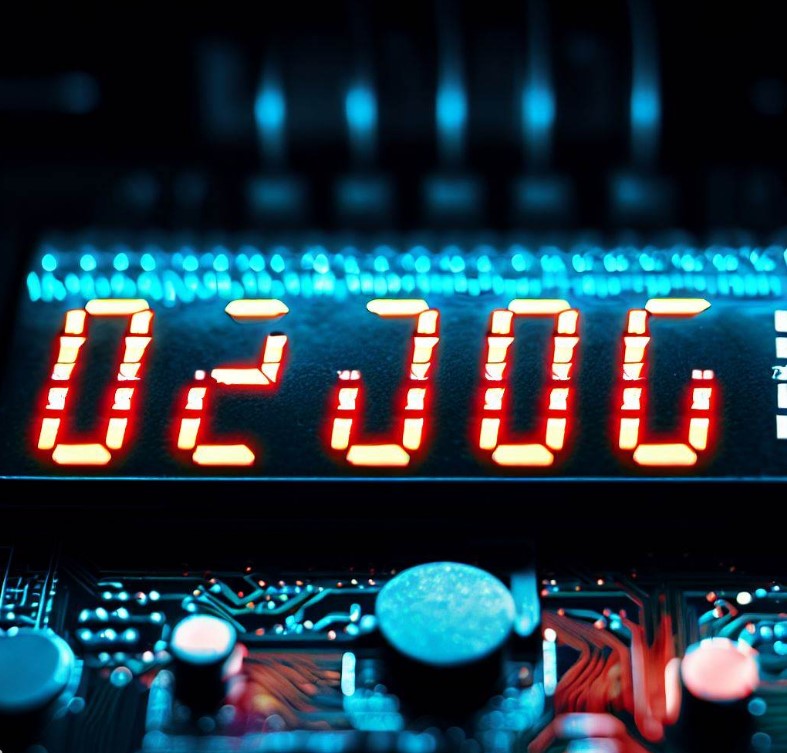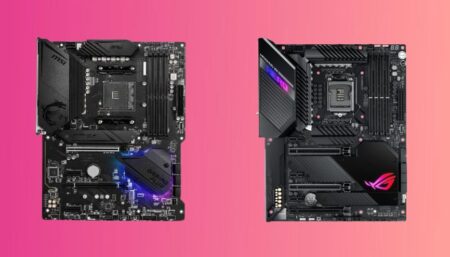
A processor is like a computer’s brain, but a motherboard is like a skeleton holding it together with all the caelements. The overall performance of a system directly correlates with the motherboard. Since it acts as a platform where the rest of the elements come together and operate, you must take extra care of the mother circuit. This is the only way to keep everything flowing without causing any lag or issue. In contrast, your system will not work if a motherboard gets faulty. Ultimately, you must either cure the problem or purchase a new motherboard.
If you suspect a bad motherboard, it’s essential to know how to check for faults when testing your system. Motherboards can have various issues, so when you check if there are any problems, be thorough in your examination. There are several reasons for board failure that cause several problems in the board and the computer. You may find it difficult to boot your PC, or your display could go black without any reason. There could be plenty of reasons why a motherboard is causing an issue. But we first need to know how to check if motherboard is faulty and how to cure the problems. Well, we have discussed everything about the topic so you can troubleshoot whether the board is defective or there is some other issue. Just be with me until the end of this post.
Key Takeaways
- A faulty motherboard can cause various symptoms, such as no power, no display, no sound, random crashes, or blue screen errors.
- To diagnose a faulty motherboard, you should first check the power supply, the RAM, the CPU, and the GPU for any issues or defects.
- You should also inspect the motherboard for any physical signs of damage, such as burns, cracks, bulging capacitors, or loose connections.
- You can use a multimeter to test the voltage levels of the motherboard and see if they match the specifications.
- You can also use a POST card to monitor the power-on self-test process and identify any error codes or beep sounds.
Common Motherboard Problems
Is there any physical damage or burning odor?

If there are no diagnostic LEDs, the next thing is to check the physical appearance of the board. Most of the time, overheating or aging materials may blow up, leak, or damage the capacitors. If there is/are some damaged capacitor(s), it’s a clear sign that something is gone wrong. Another reason to detect damage is by sniffing the burning odor. If it’s coming from the motherboard or system, it’s a clear sign that the board or any connected component connected with the motherboard is damaged or overheated. So, you must check this as well.
Blinking diagnostic LEDs

Many laptops come with diagnostic LEDs to help detect the issue before getting into serious trouble. If your board has these error lights and you think they’re faulty, make sure to turn on the system and look at them. For example, Q-LEDs are given in some ASUS motherboards that start lighting up when they find issues with any connected elements like CPU, RAM, or graphics card. For your information, these lights can blink differently depending upon the brand and errors, so take help from the board’s manual.
The computer failed to start.
Sometimes, the computer fails to start expectedly; instead, it loads the BIOS menu initially. This indicates something unusual is happening with the software or hardware connected to the motherboard. In such a situation, the problem is breaking the sequence of the way in which the motherboard performs and making it difficult to communicate with the other devices. If any of such symptoms are there, it’s a clear sign that something bad has happened with the motherboard making it unable to start.
The PC is turned on, but the screen is black.
If you press the power button, everything starts loading up, you get the backlit keyboard working, and indicators are blinking, but there is no sign of whether the screen is working—the screen is just black all the time. If this happens with you, there are some chances that your motherboard is okay, but only minor structural issues. It may mean that the display ICs on the motherboard is faulty that is not letting the display turn on. Be with me, and I’ll explain the solution to this issue in the next section.
Blue Screen of Death
The Blue Screen of Death or BSoD can be caused due to faulty motherboard or driver errors. It coils also happened due to some other hardware connected to the computer or with the motherboard. For your information, it’s also known as Windows Stop Error, so it doesn’t always mean to issue solely with the motherboard. According to Microsoft, there is a 10% chance that this is happening due to hardware issues and about 5% due to some unknown causes related to software.

As I mentioned earlier, BSoD may be happening due to a wrong driver or hardware failure. You will have seen an error like (0x000000(0x000000,0x000000,0x000000,0x000000) if you’re using a computer for a long time. If you’re getting errors like this one, you must copy them and visit Microsoft’s Knowledge Base to match this error. You will definitely get the reason why this error is happening. Also, sometimes, motherbaord isn’t detecting GPU. This can also be a reason for this issue.
Freeze or Glitches
What if your PC hangs or freezes or GPU bottlenecks in the middle of your workflow? It would be an unhappy moment. If this has ever happened with your computer, chances are it either has some issues regarding its software/operating system or is happening due to faulty hardware. You must troubleshoot to check if it is happening due to software. If not, pull your motherboard out and closely examine its structure, capacitors, ICs, and other connected elements to determine the issue. You can also check whether all the elements are connected in order or not.
Beeping sounds
Another phenomenon that can tell you whether the motherboard is working fine or faulty is the beeping sounds. It’s one of the most effective methods after diagnostic LEDs to test the board’s reliability. To check the board via this method, follow the steps given below.
- Step 1: Unplug all devices other than CPU and memory modules.
- Step 2: Start the system with BIOS in order to perform POST.
- Step 3: The computer will either beep via this test or not.
If the computer beeps, you can check all types of beep codes and compare them with the one that is produced. This way, you can know what is happening with the motherboard.
Use diagnostic software
You can also use specific software to detect problems with the motherboard. Some special diagnostic software can help you uncover some deeper issues and problems that the board is facing. For your information, not all the software can work on all the motherboards. Therefore, we have mentioned the top three, so you can find one for your motherboard.
Conclusion
A motherboard is one of the most important components in a computer since it holds all the elements together and lets them coordinate with each other. But if it’s faulty, it may cause some severe issues, affect fps while gaming, or even damage the other components in some cases. Well, we can save it from reaching that stage if you know how to check if the motherboard is faulty, which is the first step toward the solution. Well, we have tried our best to introduce you to all the possibilities of a defective board.
However, the exact root cause behind the lousy mobo is quite challenging to find since it could be any out of tens of reasons. But still, it becomes quite convenient if your board has diagnostic LEDs, beeping sounds, or support software to detect the issue. If one doesn’t support all these features, in that case, you can check the board physically. You can start by checking the physical condition of the board or can check the capacitors on the board—if there is some damage, it’s a clear sign that there is some issue.
Frequently Asked Questions
How can I test to see if my motherboard is bad?
You can do a few things to check whether the board is okay or in a bad state. You can check the board’s visual condition and power supply unit or perform some quick stress tests to know the current situation of the motherboard.
What happens if a motherboard fails?
There can be several symptoms of motherboard failure. Most of the time, if there is some physical damage, burning odor, blue screen of death, or random freezing issue, these are the signs that your board may fail.
What are the causes of motherboard failure?
There could be several reasons behind motherboard failure. The most common ones include excessive heat, electrical surges, bad input power, too much dust, and more. Also, some physical damages can be a reason behind motherboard failure.
Will a computer turn on with a bad motherboard?
A computer with a faulty motherboard will typically fail to power on, as the motherboard is the crucial component interconnecting all other hardware. However, partial functionality may occur in rare cases.




![How to Test Motherboard without CPU? 4 Methods [2024]](https://www.ingameloop.com/wp-content/uploads/How-to-Test-Motherboard-without-CPU-450x257.jpg)
![Can Motherboard Affect FPS? Each Factor is Explained [2024]](https://www.ingameloop.com/wp-content/uploads/Can-Motherboard-Affect-FPS-450x257.jpg)
![Which Motherboard supports DDR5 RAM? [2024]](https://www.ingameloop.com/wp-content/uploads/Which-Motherboard-supports-DDR5-RAM-450x257.jpg)
![How to Reset the Motherboard? Guide [2024]](https://www.ingameloop.com/wp-content/uploads/How-to-Reset-the-Motherboard-1-450x236.jpg)